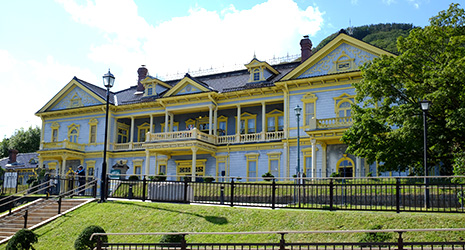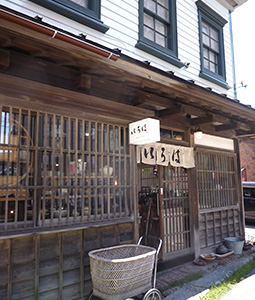Home > Highlighting JAPAN >Highlighting Japan June 2016>Living Heritage
Highlighting JAPAN


Hakodate Hills
When Hakodate was designated as one of the first ports in Japan to open to foreign trade in the mid-nineteenth century, many Western-style buildings were constructed in the town in response to new needs. Today the local government and citizens work closely together to preserve what remains of these historically valuable structures.
Every year three million people visit Hakodate in Hokkaido, with foreign tourists said to account for a rapidly increasing 10% of that traffic. Now the journey to this city on the northernmost of Japan’s four main islands has been made quicker and easier by the opening in March of the Hokkaido Shinkansen, a bullet train line connecting the main island of Honshu and Hokkaido via a submarine tunnel.
One of Hakodate’s chief attractions is the exotic townscape of its hilly quarter, the early development of which dates back some 150 years. The Edo government, which ruled Japan from the early seventeenth century, had severely restricted international exchange and trade for more than 200 years, but shifted its policy in the mid-nineteenth century, which is when Hakodate joined the ports of Yokohama and Nagasaki in opening to foreign trade. Western-style structures such as churches and consulates were soon built around the port and at the foot of Mt. Hakodate, and these have become popular sightseeing spots.
In addition to such grand structures as the Hakodate Orthodox Church (built in 1916), Old Public Hall of Hakodate Ward (1910), Old Russian Consulate (1908) and Old British Consulate (1913) are houses and shops of an architectural style that is peculiar to Hakodate. These structures are characterized by traditional Japanese features such as latticed windows and sliding doors on the ground floor and by Western-style clapboard walls and long vertical windows on the upper floor.
“Hakodate is a city with many slopes. When you look up from the port, the buildings on the slopes look good when the conspicuous upper part is in a Western style,” says Takeshi Hasebe of the Town Development Landscape Section of the Hakodate City Government. “This explains their popularity with residents at the time they were built. Still today, the people of Hakodate revere these buildings as part of a unique landscape that developed through interaction with foreign cultures long ago.”
Hakodate is surrounded on three sides by the sea and is very windy, making fire a serious hazard in the days when many of the buildings here were constructed from wood. The characteristically wide slopes and streets of Hakodate were designed to mitigate the risk of major conflagrations following the devastating fires of 1878 and 1879. Moreover, many early warehouse and other structures in the city, such as Higashi Hongan-ji Temple (Hakodate Branch) and the Kanemori Red Brick Warehouse (both pictured) incorporated disaster damage control measures when they were reconstructed after the great fire of 1907.
In more recent times, the biggest risk to the old cityscape has been urban redevelopment. Old structures began to be demolished in around 1975 to be replaced by high-rise apartment buildings. In 1977, when it was announced that the Old Branch Office of the Hokkaido Government (1909), a wooden structure in the Renaissance style, would be relocated to the Historical Village of Hokkaido in Sapporo, local citizens launched a campaign to cancel the plan. The movement was successful and served to heighten awareness in the community of the importance of preserving Hakodate’s historic structures.
In 1988, following a survey of residents in the hilly quarter, the city government constituted the Ordinance for Historic Landscapes in the Western Area of Hakodate City, legislation which preserves the cityscape as a citizen-shared property to be passed down from generation to generation. In the same year, the Agency for Cultural Affairs designated parts of the same area as an Important Preservation District for Groups of Traditional Buildings, further protecting the valuable cityscape for Japan.
“To utilize and preserve historic structures, we have to tackle many issues, such as the aging of buildings and the aging of the local population,” says Hasebe. “In response to this difficult situation, the city government is carrying out a wide range of measures in collaboration with local people, including granting subsidies for repairing and mending historic structures, and providing matching services for young people who want to live or work in these buildings. We will continue to preserve the historic cityscape of Hakodate in cooperation with our fellow residents.”
© 2009 Cabinet Office, Government of Japan








